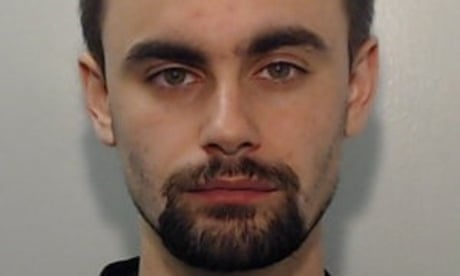

A man who used AI to create child abuse images using photographs of real children has been sentenced to 18 years in prison.
In the first prosecution of its kind in the UK, Hugh Nelson, 27, from Bolton, was convicted of 16 child sexual abuse offences in August, after an investigation by Greater Manchester police (GMP).
Nelson had used Daz 3D, a computer programme with an AI function, to transform “normal” images of children into sexual abuse imagery, Greater Manchester police said. In some cases, paedophiles had commissioned the images, supplying photographs of children with whom they had contact in real life.
He was also found guilty of encouraging other offenders to commit rape.
He sold his images in internet chatrooms, where he also discussed child sexual abuse with other offenders, making about £5,000 during an 18-month period by selling the images online.
While there have been previous convictions for “deepfakes”, which typically involve one face being transferred to another body, Nelson created 3D “characters” from innocent photographs.
Sentencing Nelson at Bolton crown court on Monday, judge Martin Walsh said it was “impossible to know” if children had been raped as a result of his images. Walsh said Nelson had no regard for the harm caused by distributing the “harrowing and sickening” material.
He added: “There seems to be no limit to the depths of depravity exhibited in the images that you were prepared to create and exhibit to others.”
Nelson was caught after he told an undercover police officer in an online chatroom that he charged £80 to create a new character, using supplied pictures, Bolton crown court heard.
“He stated: ‘I’ve done beatings, smotherings, hangings, drownings, beheadings, necro, beast, the list goes on’ with a laughing emoji,” David Toal, for the prosecution, said.
The court heard that Nelson was arrested in June last year. “He said he felt vile and that his mind was corrupted,” Toal said.
“He considered that his offending had got out of control,” he added.
Police searches of his devices also revealed that Nelson had exchanged messages with three separate individuals, encouraging the rape of children under 13.
During the course of the investigation, officers identified suspects and victims worldwide, including in Italy, France and the US.
Nelson was later found guilty of encouraging the rape of a child under 13, attempting to incite a boy under 16 to engage in a sexual act, distributing and making indecent images, and possessing prohibited images.
Nelson appeared in the dock wearing a waistcoat and tie. He waved to his parents in the public gallery as he came into court, but sat with his head down for most of the hearing.
Defending Nelson, Robert Elias told the court he had lived a “lonely bedroom life in his parents’ home”.
“What he was seeking primarily was validation, congratulations and a sense of belonging in a community. He was earning relatively small amounts of money and desperately wanted validation.
“He plunged down the rabbit hole to this sort of fantasy life and became completely engrossed in it. He has brought his life crashing down around him, to the shock and horror of his immediate family.”
“It is extremely disturbing that Hugh Nelson was able to take normal photographs of children and, using AI tools and a computer programme, transform them and create images of the most depraved nature to sell and share online,” Jeanette Smith, specialist prosecutor for the CPS, said.
“Technology is rapidly evolving and, unfortunately, so too is its risk to children. I hope this conviction sends a clear message to those who exploit this technology and inflict harm on children: you will be robustly pursued by law enforcement, prosecuted by the CPS and brought to justice.”
AI sexual abuse images are presenting new challenges in policing, with other forces turning to GMP for support with new investigations.
“The reason [this case] was very different is because it challenges the kind of view of what an indecent image of a child is,” DCI Jen Tattersall of GMP’s sex offender management unit said.
She added: “The computer-generated imagery trend is now becoming more prevalent, not only in GMP – but in other forces,” she added, saying that in the last week, detectives had begun investigations into two new cases involving computer-generated images.
“So at some point that is going to not be the exception any more, and it’s going to be the norm.”
The Nelson case was “the first to really test” the law around indecent images that had been digitally manipulated, she said, and GMP had worked with specialists at the CPS and the National Crime Agency to secure the prosecution.
As well as advances in technology, changes in behaviour in recent years have made policing the internet offences more difficult. “Covid has had a massive effect in the online space,” Tattersall said. “A lot more people are online.”
“The amount of platforms has just massively increased, so that’s a real challenge,” she added.
While AI can present opportunities for law enforcement, Tattersall said, the increasingly sophisticated technology also presents a significant threat for police forces, particularly as there is a risk that it may evolve faster than existing criminal legislation.
She added: “The reality is, it is going to represent a real challenge for us just because of how easy it is to do, and how easy it is to manipulate an image that is really innocent, and make it into something that is really abusive and indecent.”
However, she said the Nelson case “sends a clear message to criminals that you might use technology, and manipulate things, and test the flex of the law, but actually we are still going to prosecute you. We’re going to put you in prison”.